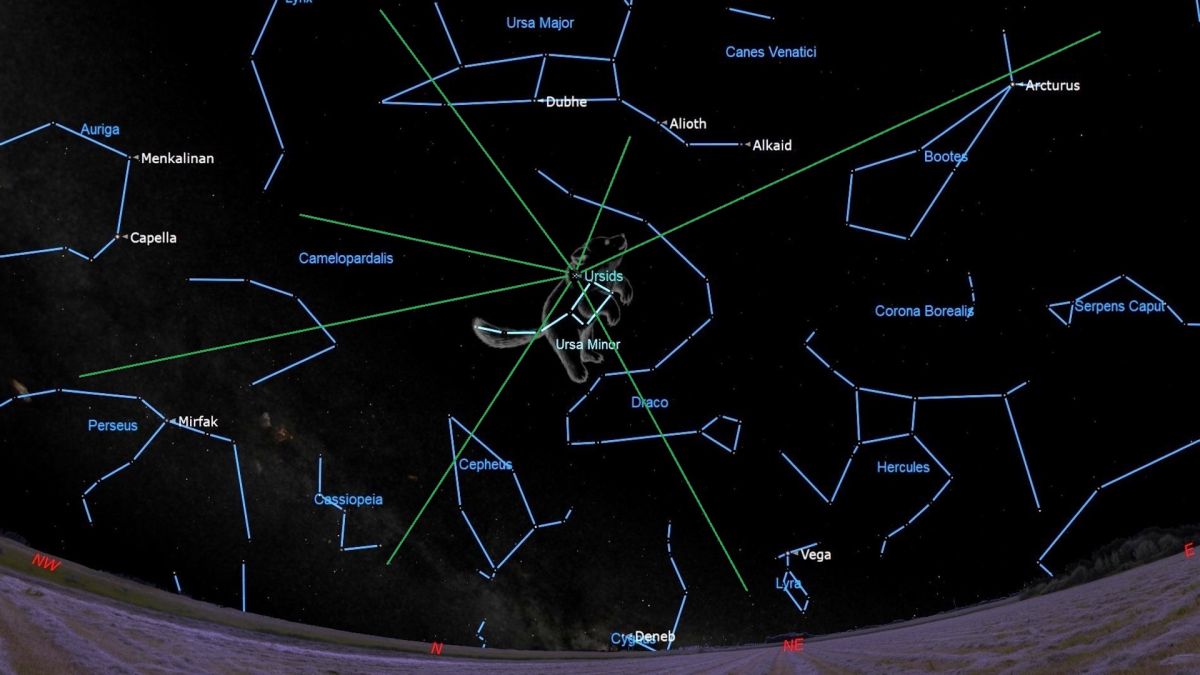Santa Claus and his reindeer aren’t the only ones making an appearance in the skies this week.
If you missed the Geminid meteor shower last week, you have one more chance to spot some shooting stars before the end of year: The Ursid meteor shower peaks tonight (Dec. 22 into the morning of Dec. 23), and runs through Dec. 26.
Despite being one of the dimmer meteor showers, there is a confirmed a stroke of good luck for the Ursids this year. The new moon occurs on Dec. 23, which means viewing conditions will be excellent in the night sky. That is, so long as the weather cooperates.
Related: Meteor showers 2022-2023: Where, when and how to see themRead more: Ursid meteor shower shines with ideal dark sky conditions this year
We experience this meteor shower every December as the Earth moves through the trail of debris left behind by comet 8P/Tuttle. The shower’s radiant, or point from which it appears to originate, is in the constellation Ursa Minor, the Little Bear.
The Ursid meteor shower is considered a minor one, as it’s relatively low-producing. This year, the shower is anticipated to produce anywhere from eight to 28 meteors per hour, compared to the Geminids’ 120-per-hour maximum. There are, however, some years where the Ursids produce outbursts of meteors — some dozens per hour. But those outbursts are never guaranteed and are somewhat rare, occurring in 1945, 1986, 2000, 2006, 2007 and 2008.
Unfortunately the vast majority of the country will be contending with frigid temperatures on Thursday (Dec. 22), as a pocket of Arctic air descends over the continental United States. Factoring in windchill, the temperatures will fall below 0 degrees Fahrenheit (-18 Celsius) in many places, with destinations as far south as Florida perhaps experiencing single-digit temperatures. On top of that, the Midwestern United States is predicted to be hit with a blizzard, which, naturally, will obliterate any chance of seeing meteors.
Keeping cold weather safety in mind, if you’re able to look out a window and get a good view of the dark skies, the best time to see the Ursids would be just before dawn in the early morning hours of Dec. 23. But if you do plan on attempting to view the Ursids, please stay safe and warm!
Whether you’re new to skywatching or have been it at for years, be sure not to miss our guides for the best binoculars and the best telescopes to view the Ursid meteor shower, Ursa minor or anything else in the sky. For capturing the best skywatching images you can, we have recommendations for the best cameras for astrophotography and best lenses for astrophotography.
Follow us on Twitter @Spacedotcom (opens in new tab) or on Facebook (opens in new tab) .
